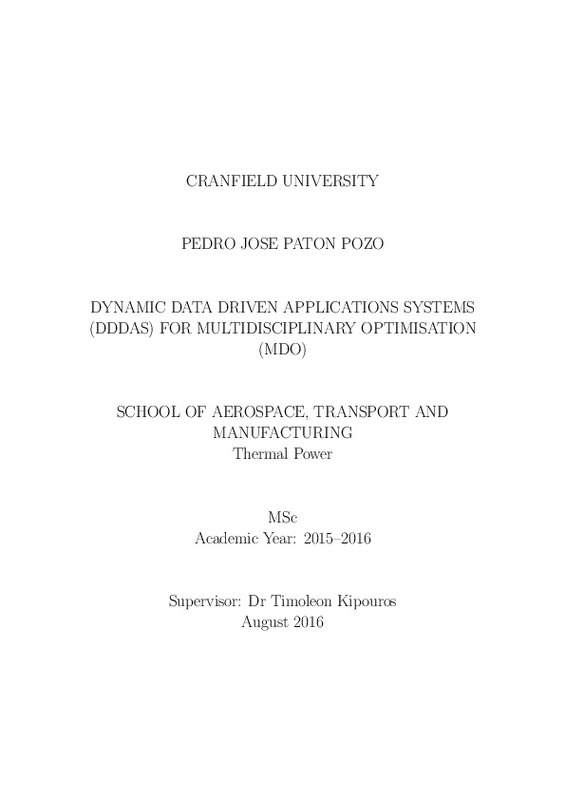JavaScript is disabled for your browser. Some features of this site may not work without it.
Buscar en RiuNet
Listar
Mi cuenta
Estadísticas
Ayuda RiuNet
Admin. UPV
Dynamic data driven applications systems (DDDAS) for multidisciplinary optimisation (MDO)
Mostrar el registro completo del ítem
Patón Pozo, PJ. (2016). Dynamic data driven applications systems (DDDAS) for multidisciplinary optimisation (MDO). Universitat Politècnica de València. http://hdl.handle.net/10251/142210
Por favor, use este identificador para citar o enlazar este ítem: http://hdl.handle.net/10251/142210
Ficheros en el ítem
Metadatos del ítem
| Título: | Dynamic data driven applications systems (DDDAS) for multidisciplinary optimisation (MDO) | |||
| Autor: | Patón Pozo, Pedro José | |||
| Director(es): | Kipouros, Timoleon | |||
| Entidad UPV: |
|
|||
| Fecha acto/lectura: |
|
|||
| Resumen: |
[ES] Nowadays, the majority of optimisation processes that are followed to obtain new
optimum designs involve expensive simulations that are costly and time comsuming.
Besides, designs involving aerodynamics are usually ...[+]
|
|||
| Palabras clave: |
|
|||
| Derechos de uso: | Reserva de todos los derechos | |||
| Editorial: |
|
|||
| Titulación: |
|
|||
| Tipo: |
|
recommendations
Este ítem aparece en la(s) siguiente(s) colección(ones)
-
ETSID - Trabajos académicos [8898]
Escuela Técnica Superior de Ingeniería del Diseño







